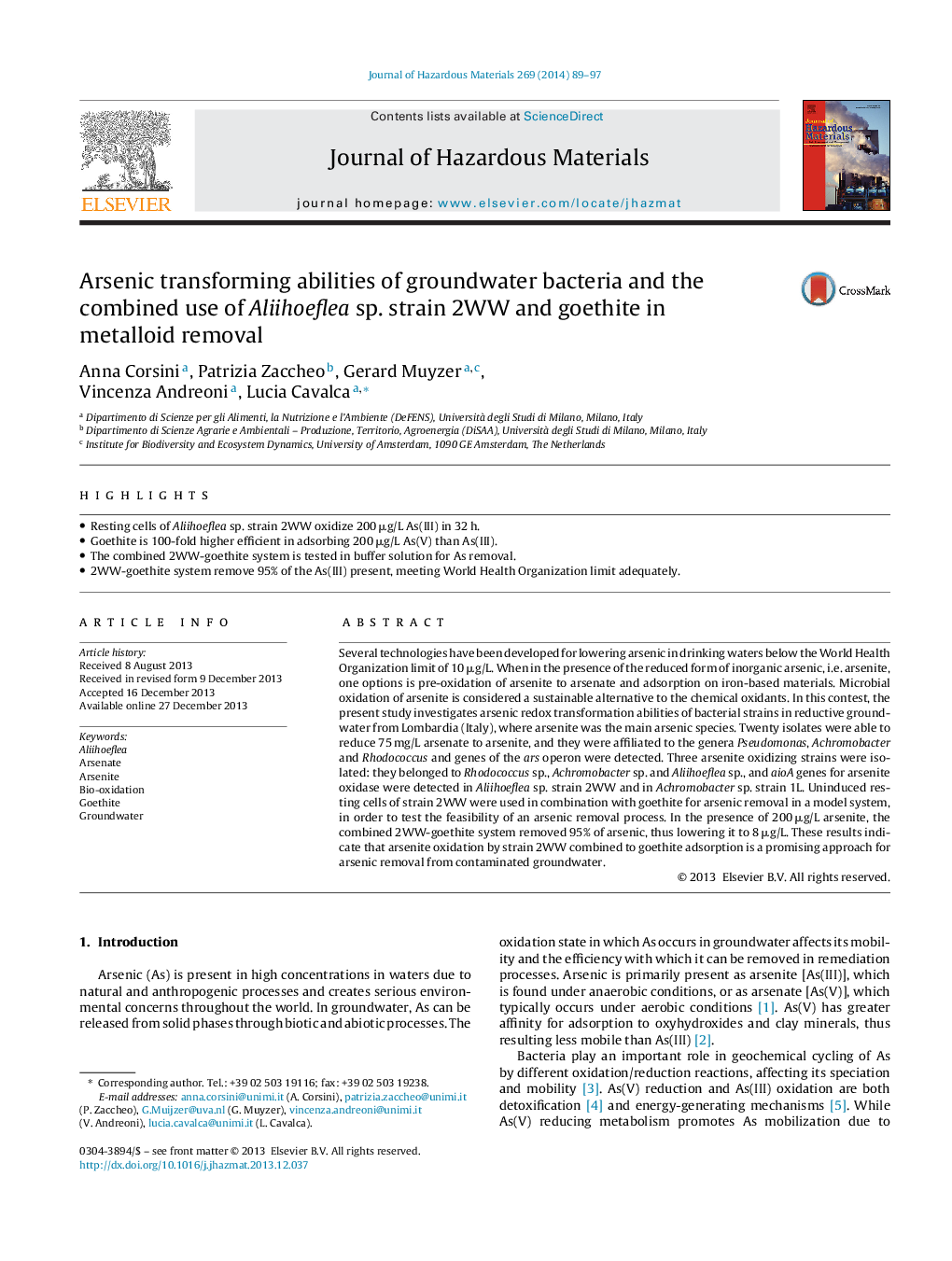| کد مقاله | کد نشریه | سال انتشار | مقاله انگلیسی | نسخه تمام متن |
|---|---|---|---|---|
| 576998 | 1453091 | 2014 | 9 صفحه PDF | دانلود رایگان |
عنوان انگلیسی مقاله ISI
Arsenic transforming abilities of groundwater bacteria and the combined use of Aliihoeflea sp. strain 2WW and goethite in metalloid removal
دانلود مقاله + سفارش ترجمه
دانلود مقاله ISI انگلیسی
رایگان برای ایرانیان
کلمات کلیدی
موضوعات مرتبط
مهندسی و علوم پایه
مهندسی شیمی
بهداشت و امنیت شیمی
پیش نمایش صفحه اول مقاله

چکیده انگلیسی
Several technologies have been developed for lowering arsenic in drinking waters below the World Health Organization limit of 10 μg/L. When in the presence of the reduced form of inorganic arsenic, i.e. arsenite, one options is pre-oxidation of arsenite to arsenate and adsorption on iron-based materials. Microbial oxidation of arsenite is considered a sustainable alternative to the chemical oxidants. In this contest, the present study investigates arsenic redox transformation abilities of bacterial strains in reductive groundwater from Lombardia (Italy), where arsenite was the main arsenic species. Twenty isolates were able to reduce 75 mg/L arsenate to arsenite, and they were affiliated to the genera Pseudomonas, Achromobacter and Rhodococcus and genes of the ars operon were detected. Three arsenite oxidizing strains were isolated: they belonged to Rhodococcus sp., Achromobacter sp. and Aliihoeflea sp., and aioA genes for arsenite oxidase were detected in Aliihoeflea sp. strain 2WW and in Achromobacter sp. strain 1L. Uninduced resting cells of strain 2WW were used in combination with goethite for arsenic removal in a model system, in order to test the feasibility of an arsenic removal process. In the presence of 200 μg/L arsenite, the combined 2WW-goethite system removed 95% of arsenic, thus lowering it to 8 μg/L. These results indicate that arsenite oxidation by strain 2WW combined to goethite adsorption is a promising approach for arsenic removal from contaminated groundwater.
ناشر
Database: Elsevier - ScienceDirect (ساینس دایرکت)
Journal: Journal of Hazardous Materials - Volume 269, 30 March 2014, Pages 89-97
Journal: Journal of Hazardous Materials - Volume 269, 30 March 2014, Pages 89-97
نویسندگان
Anna Corsini, Patrizia Zaccheo, Gerard Muyzer, Vincenza Andreoni, Lucia Cavalca,